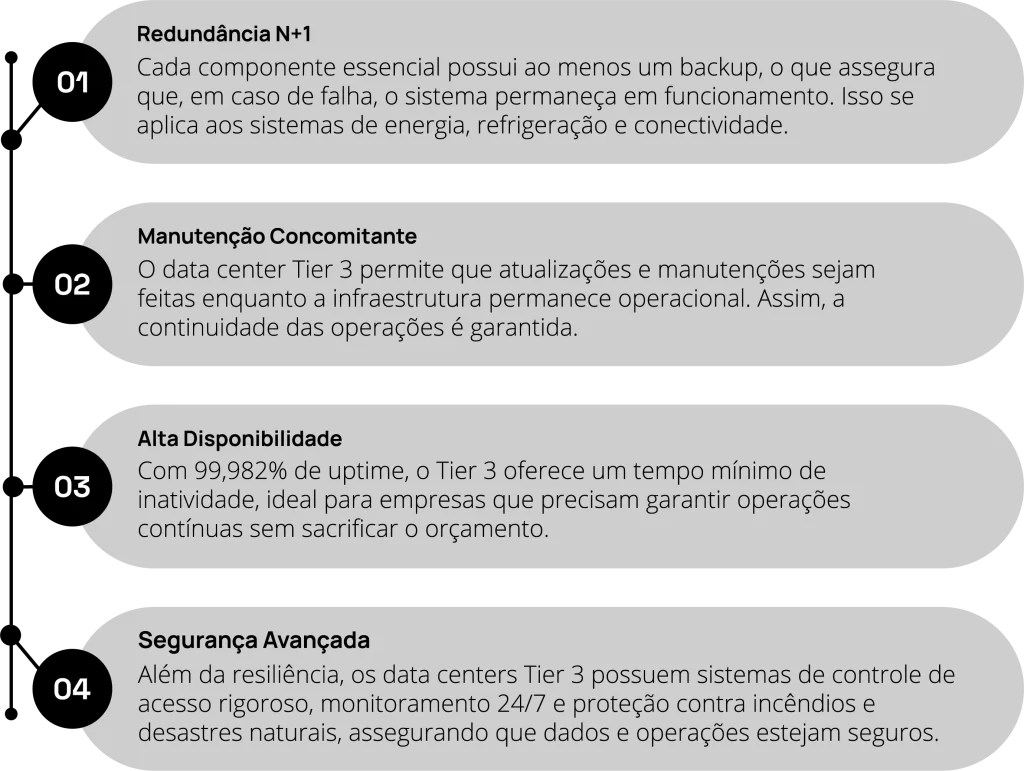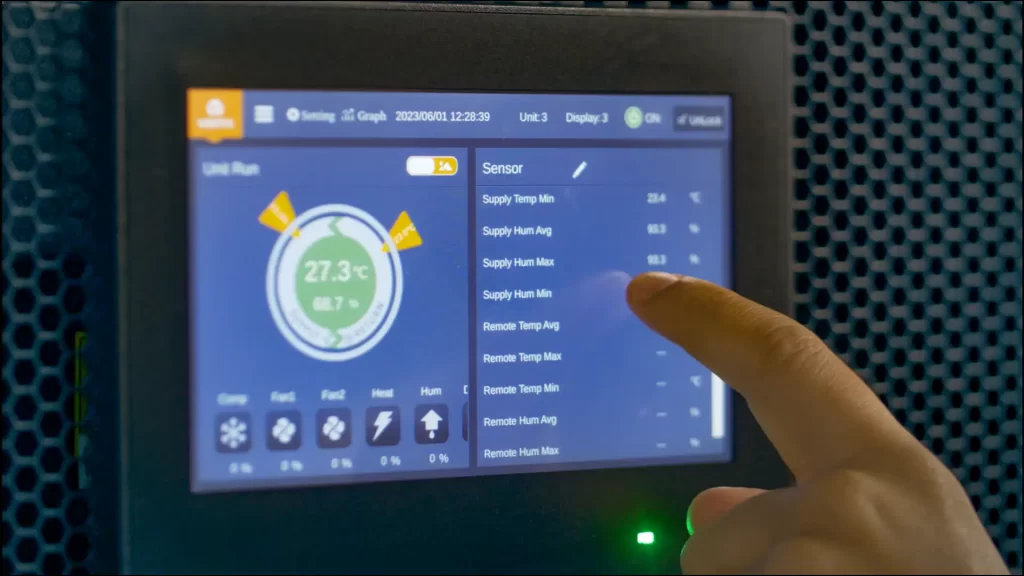Questions and Answers About Data Center Tiers
1. What are data center Tiers?
Data center Tiers are classifications that indicate the level of redundancy and availability of a facility. This system is divided into four levels, from Tier 1 to Tier 4, where Tier 1 has the lowest availability and Tier 4 provides the highest redundancy and security.
2. What are the differences between a Tier 1 Data Center and a Tier 3 Data Center?
A Tier 1 data center has basic infrastructure with a single path for power and cooling, leading to a potentially higher amount of downtime. In contrast, a Tier 3 data center features N+1 redundancy, enabling maintenance without interruptions and delivering 99.982% uptime.
3. What is the cost of a Tier 3 data center?
The construction and operational costs of a Tier 3 data center can vary widely depending on location and specifications, but they are generally 50% and 32% more expensive, respectively, than Tier 1 and Tier 2 facilities due to their more robust infrastructure and redundancy requirements.
4. Are data center Tiers important?
Choosing the right Tier is crucial because it directly impacts business continuity, data security, and an organization’s ability to recover in the event of failures. An inadequate data center can lead to costly interruptions and revenue loss, in addition to damaging a company’s reputation.
5. What is the lifespan of a Tier 3 data center?
They are designed to last a long time, with a life expectancy that can exceed 15 to 20 years, depending on maintenance practices and system upgrades over time. Built-in redundancy and security help ensure the infrastructure remains resilient throughout its lifespan.
6. What is a Tier 2 Data Center?
A Tier 2 data center is a level of infrastructure that offers minimal redundancy compared to Tier 1. It has a single power and cooling path and does not include N+1 redundancy. Guaranteed uptime is 99.749%, resulting in up to 22 hours of downtime per year. It is suitable for companies that need reasonable availability but do not have the budget for a Tier 3.
7. What are the space requirements for a Tier 3 data center?
Space requirements for a Tier 3 data center depend on the facility’s specific design, but in general, they require separate areas for servers, cooling systems, and technical support. A Tier 3 typically requires more space compared to lower Tiers because it involves greater redundancy and infrastructure.
8. What should be considered when choosing a Tier level?
When choosing a data center Tier, it's essential to consider business continuity, data security, compliance requirements, total cost of ownership, and scalability. Companies should assess their current and future operational needs to ensure the Tier selection is aligned with their strategic goals.
9. Is a Tier 4 data center always better than a Tier 3?
While a Tier 4 data center offers greater redundancy and 99.995% uptime (only 26.3 minutes of downtime per year) due to its fault-tolerant design, it also comes with significantly higher costs, around 27% more than a Tier 3. The choice between Tier 3 and Tier 4 should consider the company’s specific needs, available budget, and risk tolerance. Not every organization requires the extreme resilience that Tier 4 provides.
10. Which industries benefit the most from a Tier 3 data center?
Industries such as finance, healthcare, telecommunications, and information technology benefit greatly from a Tier 3 data center. These sectors frequently handle sensitive data and critical operations that demand high availability and security, making Tier 3 an ideal choice to ensure business continuity and meet strict regulatory requirements.
11. What is concurrent maintenance in a Tier 3 data center?
Concurrent maintenance is the ability to perform maintenance on a Tier 3 data center without interrupting service operations. This is possible thanks to system redundancy, allowing companies to perform updates and repairs on one set of equipment while other parts of the data center continue operating normally. This minimizes the risk of downtime during maintenance activities.




